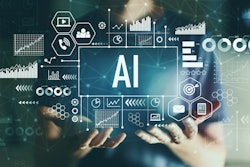
AI agents are reshaping product lifecycle management (PLM) by enabling automation, simplifying user interaction and streamlining decision-making across engineering and manufacturing. Early adopters are realizing significant gains in design innovation and operational efficiency. This signals a shift toward broader industry adoption. As generative AI (GenAI) and agentic AI capabilities evolve, they are unlocking new opportunities that were previously unattainable in digital engineering and PLM.
The rise of AI agents in PLM
Agentic AI agents are becoming essential components of PLM. As these systems evolve, they are increasingly capable of assisting engineers in complex tasks such as impact analysis, risk assessment, requirements verification, and simulation. Organizations that structure their data assets using a digital thread can leverage AI agents to enhance engineering workflows and address skills gaps across PLM.
The evolution of AI agents
AI agents were once limited to rule-based tasks in PLM. Now, they leverage GenAI to support more complex workflows. Engineers continue to oversee the most complex lifecycle processes, but AI enhances efficiency by handling repetitive or data-intensive tasks.
Initially, GenAI models focused on text-based generation, translation, and summarization. Recent advances in large language models (LLMs) have enabled multimodal use cases that can utilize images, 3D models, and more complex engineering formats. This allows AI agents to provide valuable assistance in more of the challenging tasks engineers face daily.
AI agent use cases in PLM and digital engineering
AI agents can operate in the background or take on more prominent roles, assisting engineers in multiple ways. Here are some key use cases:
● Product design. AI agents can help design and refine complex designs using multimodal models. Trained on a company’s product catalog, these agents can suggest optimizations, automate repetitive tasks, and update designs dynamically as requirements evolve.
● Optimized simulations. AI agents enhance product simulations by integrating machine learning, deep learning, physics-based models, and generative AI. They assist in automating meshing, refining simulation parameters, and improving computational efficiency. This leads to better product quality and faster time to market.
● Requirements traceability. AI agents enhance requirements traceability by identifying dependencies and linking requirements across the digital thread. This helps users navigate large data sets, accelerating compliance checks and ensuring product performance.
● Predictive maintenance. AI agents analyze real-time sensor data and compare it with historical performance to detect anomalies and predict potential failures. While AI-driven insights improve maintenance scheduling, human oversight remains essential to validate predictions and take corrective action.
● Supply chain optimization. AI agents analyze data across market trends, logistics, and supplier performance to optimize supply chain processes. By considering external factors like geopolitical risks and internal constraints like inventory levels, AI ensures timely, cost-effective deliveries.
Challenges to widespread adoption of AI agents
AI agents simplify PLM and digital engineering workflows. However, businesses still face learning curves when adopting this evolving technology. Navigating these challenges requires strategic planning, adaptation, and workforce upskilling. Key adoption challenges include:
● Data readiness. AI relies on interconnected data and processes to deliver accurate and actionable insights. A robust digital thread, seamlessly connecting information across the entire development and manufacturing lifecycle is crucial. Without this foundation, AI-driven decisions and outcomes will lack reliability and precision.
● Lack of data governance. Many organizations struggle with fragmented, inconsistent, and siloed data. AI cannot be expected to resolve these issues without disciplined governance and human validation. A structured governance model is essential to ensure AI operates effectively and prevents unstructured data chaos.
● IP protection and security concerns. AI’s effectiveness relies on access to large volumes of data. This dependency makes data security a critical concern. Robust measures must be in place to protect sensitive information, ensure compliance with regulations, and maintain trust across the product development and manufacturing lifecycle.
● Ethical and legal considerations. AI technology remains loosely regulated across international, regional, and industry-specific bodies. This lack of oversight allows AI developers to make design choices that may raise concerns about security, privacy, transparency, and ethical use.
● Limited trust and transparency. Many AI models operate as “black boxes.” This makes users hesitant to trust their outputs and complicates quality assurance processes. AI agents often struggle to justify their recommendations.
● Hallucinations and inaccurate outcomes. While AI accuracy has improved, models can still generate hallucinations or incorrect results. Without human validation and oversight, these errors may go unnoticed and propagate across workflows.
● AI and engineering skill gaps. Implementing and maintaining AI agents requires specialized technical skills. Upskilling and targeted training will be crucial for AI adoption.
These challenges are particularly significant in industries that manage complex, multi-stakeholder projects.
How to leverage AI effectively in PLM and digital engineering
To maximize the benefits of AI in product design and manufacturing, organizations must invest with a clear plan and strategy. If you're still determining how AI can support your bottom line and broader goals, here are three key steps:
1. Establish a unified digital thread
PLM data sources can quickly become unmanageable without a structured approach. A digital thread provides a modern solution by creating contextual links across a product’s digital assets – regardless of domain – enhancing traceability throughout the product lifecycle. Developing a digital thread strategy with support from the right PLM platform will ensure that AI agents have access to relevant data in a secure, controlled environment.
2. Promote organizational alignment
Implementing AI often requires significant changes to workflows and a shift in the employee mindset. Engage employees early, provide comprehensive training, and emphasize how AI complements rather than replaces their expertise. Collaboration between employees and AI tools is the key to unlocking the full potential of AI.
3. Focus on scalability
To fully leverage the benefits of AI, it must be integrated across the organization. Scalable solutions that integrate seamlessly with existing systems and processes – and can adapt over time – are essential for delivering consistent, long-term value.
AI agents are becoming an invaluable asset in PLM and digital engineering. They enhance efficiency, productivity, and accuracy across various tasks. While challenges like data readiness, governance, and security persist, organizations that prioritize strategic planning and robust data management will be better positioned to maximize AI’s benefits. With the right approach, AI agents can streamline workflows, minimize errors, and empower engineers to make more informed decisions. This will ultimately drive more efficient product development and manufacturing processes.




















